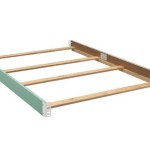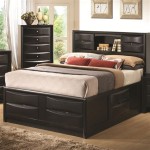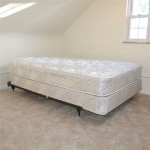Difference Between Full and Twin Bed Sizes
When furnishing a bedroom, one of the most fundamental decisions involves selecting the appropriate bed size. Two popular options are full (double) and twin beds. While both are designed for single sleepers, they cater to different needs and room dimensions. Understanding the distinctions between these bed sizes is crucial for optimizing comfort, space utilization, and overall bedroom functionality.
The primary difference between a full bed and a twin bed lies in their dimensions. A standard twin bed measures approximately 38 inches in width and 75 inches in length. This makes it a suitable option for children transitioning out of cribs, teenagers, and single adults in smaller spaces, such as guest rooms or studio apartments. A full bed, on the other hand, measures approximately 53 inches in width and 75 inches in length. The additional width offers more sleeping space, making it a comfortable choice for single adults who prefer more room to stretch out or for those who occasionally share their bed with a pet.
Beyond the dimensions, the choice between a full and twin bed often depends on several factors, including room size, the sleeper's physical size and sleeping habits, and budget considerations. A larger bedroom can easily accommodate a full bed without feeling cramped, while a smaller room may benefit from the space-saving design of a twin bed. Sleepers who tend to move around a lot during the night may find the extra width of a full bed more accommodating, while those who sleep relatively still may be content with the narrower twin bed.
Furthermore, the availability and cost of bedding and accessories, such as sheets, comforters, and bed frames, can influence the decision. Twin bed linens are generally more readily available and less expensive than full-size linens. This can be a significant factor for individuals on a tight budget or those furnishing multiple bedrooms.
Key Point 1: Dimensions and Space Considerations
The most significant difference between full and twin beds is their size. The standard dimensions of a twin bed are 38 inches wide and 75 inches long, while a full bed measures 53 inches wide and 75 inches long. This 15-inch difference in width has a substantial impact on the overall comfort and space requirements of the bed.
For smaller bedrooms, a twin bed is often the preferred choice. Its compact size allows for more floor space, which can be crucial in apartments, dorm rooms, or guest rooms where space is limited. A twin bed leaves more room for other essential furniture, such as a dresser, desk, or nightstand, without making the room feel overcrowded.
A full bed, with its extra width, provides more room to stretch out and move around during sleep. This can be particularly beneficial for individuals who toss and turn frequently or who prefer to have more personal space. However, the larger size of a full bed requires a larger room to accommodate it comfortably. In smaller rooms, a full bed may dominate the space and leave little room for other furniture or movement.
When determining which size is most appropriate, it's crucial to measure the room accurately and consider the placement of other furniture. Visualizing the layout with a floor plan can help determine whether a full bed will overwhelm the space or if a twin bed will provide sufficient comfort without sacrificing functionality.
Key Point 2: Intended User and Sleeping Habits
The intended user of the bed is another critical factor in deciding between a full and twin size. A twin bed is often suitable for children, teenagers, or single adults who are of average size and sleep relatively still. It's also a practical choice for guest rooms, where occasional use by a single sleeper is anticipated.
Children transitioning from cribs to larger beds often start with twin beds. The smaller size can be less daunting and more comfortable for them. Teenagers, especially those with limited space in their bedrooms, may also find twin beds a suitable option. However, as teenagers grow, their need for more space might warrant upgrading to a full bed.
Single adults who prefer a minimalist lifestyle or live in smaller apartments may also opt for a twin bed. It provides adequate sleeping space without taking up too much valuable square footage. However, adults who are taller or heavier may find a twin bed too confining and prefer the added width of a full bed.
A full bed is generally a better choice for single adults who prefer more room to move around during sleep or who occasionally share their bed with a pet. The extra width provides a more comfortable and less restrictive sleeping environment. Full beds are also often chosen by individuals who tend to sprawl out during sleep, as they offer more space to stretch their arms and legs without falling off the bed.
Considering the sleeping habits of the intended user is essential. If the sleeper tends to move around a lot, a full bed is likely the more comfortable option. If the sleeper is relatively still and doesn't require much space, a twin bed may be sufficient.
Key Point 3: Cost and Availability of Bedding
The cost of the bed itself, as well as the associated bedding and accessories, can significantly influence the decision between a full and twin bed. Generally, twin beds and their accompanying linens are less expensive than full beds and their corresponding items.
The lower cost of twin beds makes them an attractive option for individuals on a budget or those furnishing multiple bedrooms, such as in a vacation home or rental property. Twin bed frames, mattresses, and bedding are typically priced lower than their full-size counterparts, which can result in significant savings, especially when purchasing multiple sets.
Twin bed linens, such as sheets, comforters, and duvet covers, are also more readily available than full-size linens. This means that consumers have a wider selection of styles, colors, and materials to choose from, and they are more likely to find these items on sale or at discounted prices.
While the initial cost of a full bed and its associated linens may be higher, the added comfort and space can justify the investment for individuals who prioritize a more spacious sleeping environment. However, it's essential to factor in the ongoing cost of replacing linens and accessories over time, as these expenses can add up.
When comparing the cost of full and twin beds, it's crucial to consider the long-term implications. While a twin bed may be more affordable initially, the added comfort and space of a full bed may ultimately provide a better value for individuals who prioritize a comfortable and restful sleep.
In addition to the cost of the bed and bedding, it's also important to consider the cost of other accessories, such as bed frames, headboards, and mattress protectors. These items are also generally less expensive for twin beds than for full beds.
Ultimately, the decision between a full and twin bed depends on a variety of factors, including room size, the sleeper's physical size and sleeping habits, and budget considerations. By carefully weighing these factors, individuals can make an informed decision that optimizes comfort, space utilization, and overall bedroom functionality.
The availability of different mattress types and qualities also plays a role. Both full and twin beds are available with innerspring, memory foam, latex, and hybrid mattresses. However, the price point and specific features may vary between sizes. Shoppers should compare the features and pricing of different mattress types within each size category to determine the best value for their needs.
Furthermore, the resale value of both bed sizes should be considered. Twin beds are often easier to resell or donate due to their smaller size and broader appeal to children and college students. Full beds, while potentially commanding a higher resale price, may take longer to sell due to their larger size and more specific target audience.
The physical effort required to move and assemble the bed is another practical consideration. Twin beds are generally lighter and easier to maneuver than full beds, which can be a significant advantage for individuals who frequently move or live alone. Full beds may require assistance from another person for transportation and assembly.
In conclusion, the choice between a full and twin bed is a personal one that should be based on a careful evaluation of individual needs and circumstances. There is no universally superior option, as the optimal choice depends on a variety of factors, including room size, the sleeper's physical attributes and sleeping habits, budget constraints, and long-term considerations.

Twin Vs Full Mattress Nerd

Twin Vs Full Queen Which Mattress Size Is Right For You Amerisleep

Twin Vs Full Mattress Which Size Is Right For You Mlilyusa

Full Vs Twin Beds What S The Difference 2025 Mattress Clarity

Twin Vs Full What S The Difference Eachnight

Which Mattress Size Should I Get Texas Makers

Mattress Size Guide Secrets For Every Room Eachnight

Twin Vs Full Queen Which Mattress Size Is Right For You Nectar Sleep

Mattress Sizes And Dimensions Guide Clarity

Twin Vs Full Size Mattress Which Is Right For You Sleep Junkie








